The Train That Flies – How to ride Curitiba’s Serra Verde Express
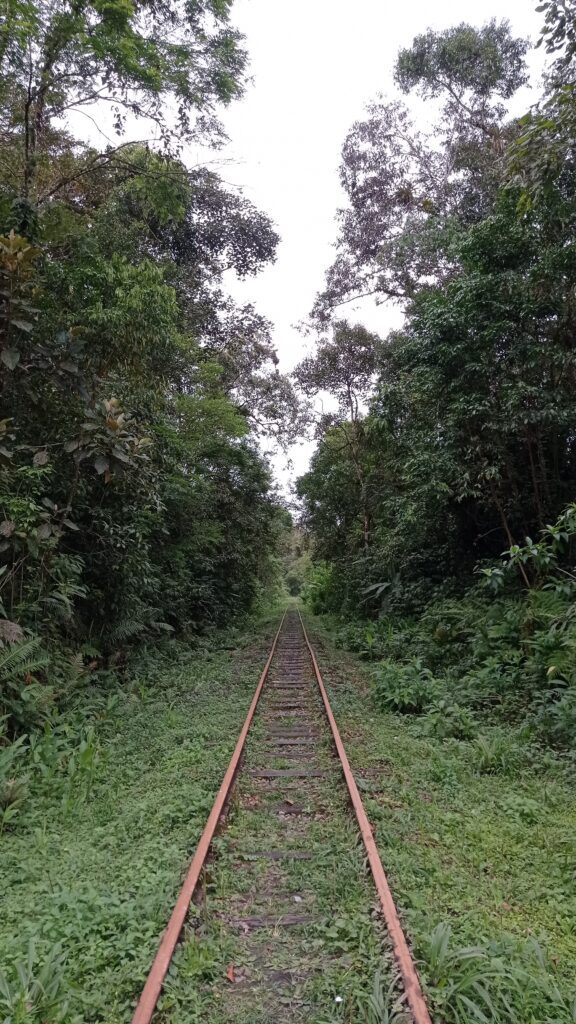

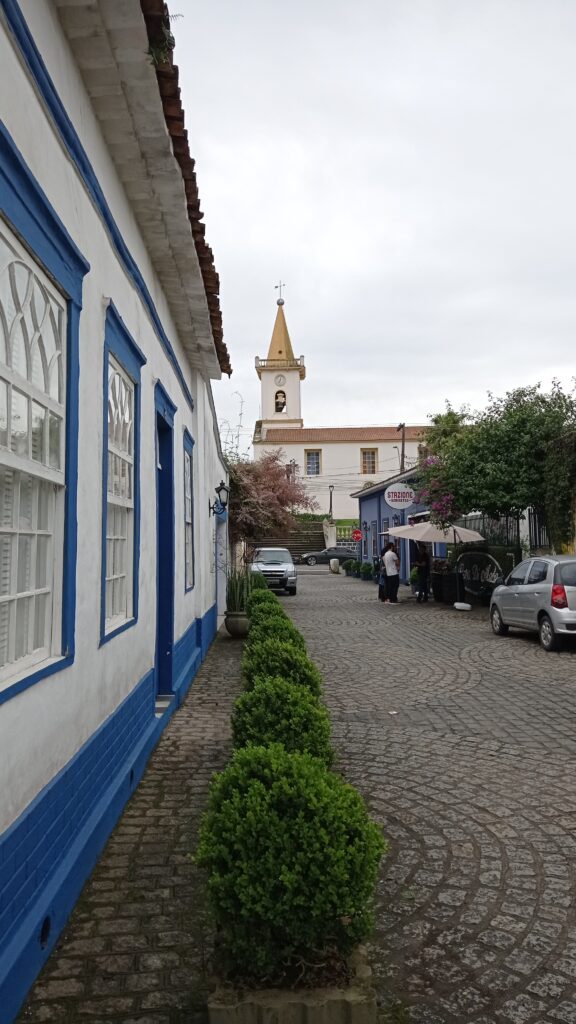

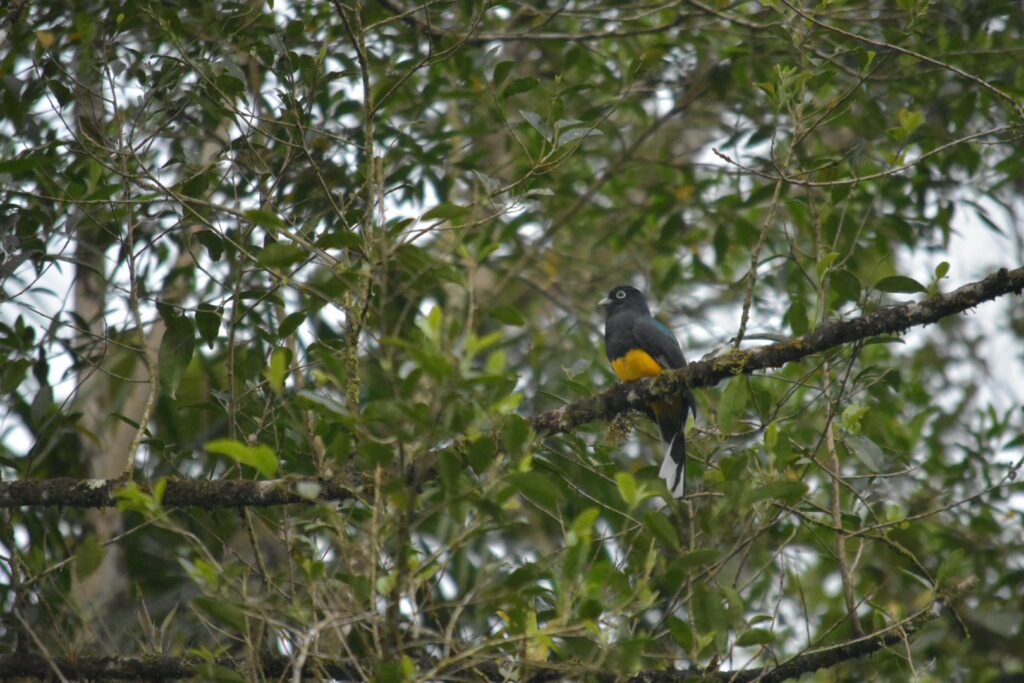

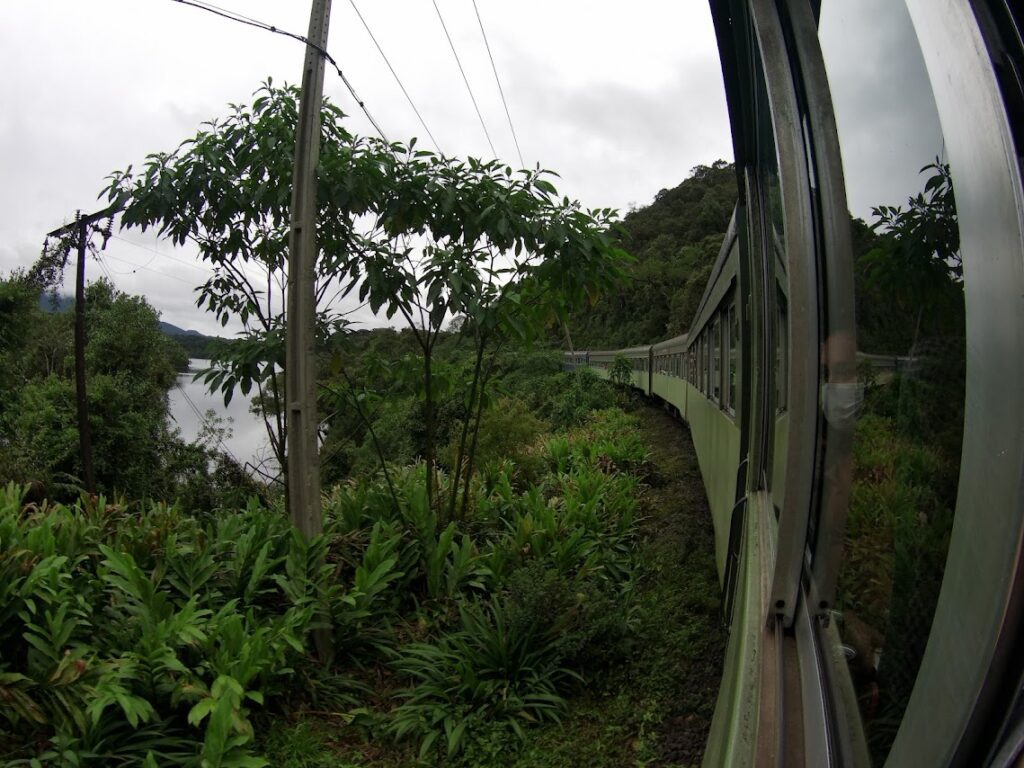

Ask people what they love about train travel and scenery will often be their top answer. It should come as no surprise then that a single-gauge railway line, running through a mountainous corner of Brazil, has been rated as one of the best in the world. Starting in the sustainability-centric city of Curitiba, snaking through the rainforest-clad mountains, hugging steep cliffs and ending in the pretty colonial town of Morretes, the Serra Verde Express is a marvel for lovers of nature, engineering and history alike.
This train is where the old cliche “it’s about the journey, not the destination” comes to life. Initially built amidst Brazil’s industrialisation drive to transport goods from Atlantic ports to Curitiba, the railway was rebranded as a tourist experience in the 90s. You’ll be delighted by quite a few things on this journey: the gorges and waterfalls unfurling below that will make you feel like you’re flying; the fact that building this railway through such terrain was even possible; and the camaraderie from your fellow passengers, who will courteously let you join them on their side of the carriage if the scenery is good there.
And for Brazilians, the trip is made even more special by the fact that going on a train in their country is a rare occasion. Despite being the size of Europe, Brazil has only three passenger train lines (four if one counts Sao Paulo’s urban rail network).
Contents
- How to buy tickets for the Serra Verde Express
- What’s the Serra Verde Express like on public holidays?
- How long does the journey from Curitiba to Morretes take?
- Do I need to book a tour?
- Getting to Curitiba train station
- Into the hills
- Arriving in Morretes
- Getting back to Curitiba
- Can I stay in Morretes overnight?
- How much does a day on the Serra Verde Express cost?
- Enjoyed this article?
How to buy tickets for the Serra Verde Express
Serra Verde Express tickets can either be bought in person at the station or online through the official Serra Verde website. You can also use the website to check how many spaces are left for a particular date without buying any, though as far as I know there’s no price advantage to doing this. Tickets are sent to you via email, in which there will be a QR code. Mobile tickets are accepted, as long as the QR code is clearly visible.
What’s the Serra Verde Express like on public holidays?
TLDR: Don’t sweat it if you have no choice but to travel on a public holiday/ weekend.
I thought I’d mention this since I went on a public holiday myself – the train only departs on certain days, so it was my only option. Despite this, I didn’t have any problems with booking a few days ahead and even though the train was at full capacity, it was still spacious enough to move around. Even when the entirety of the carriage moved to the left side in order to snap a photo of the view, there was still plenty of wiggle room.
How long does the journey from Curitiba to Morretes take?
The train journey will take approximately four hours. Getting to the station ten minutes before departure shouldn’t be a problem since the train will spend a lot of time getting “parked” (or whatever the locomotive term is). By contrast, the bus journey back to Curitiba will take roughly an hour and a half – but, nobody takes the train to Morretes if they’re in a hurry.
Do I need to book a tour?
Not at all – one can simply buy a ticket like they would any other train trip, and arrange their own transport back to Curitiba. Tours will generally include the train ticket, a barreado lunch in Morretes and a van back to your accommodation in Curitiba, possibly with a detour to the coastal town of Antonina.
This guide is intended for independent travellers, and honestly I prefer doing it this way. Going the independent route, you’ll get to choose which restaurant you go to in Morretes (and believe me, there’s no shortage of places offering the famous barreado dish), the buses from Morretes to Curitiba don’t take that long and the train comes with a guide in the carriage in any case. The only disadvantages are that seeing Antonina this way is more difficult, and you will have to get yourself to and from the bus terminal in Curitiba. Uber is quite cheap and abundant in Curitiba, though, so this shouldn’t be much of a problem.
Getting to Curitiba train station
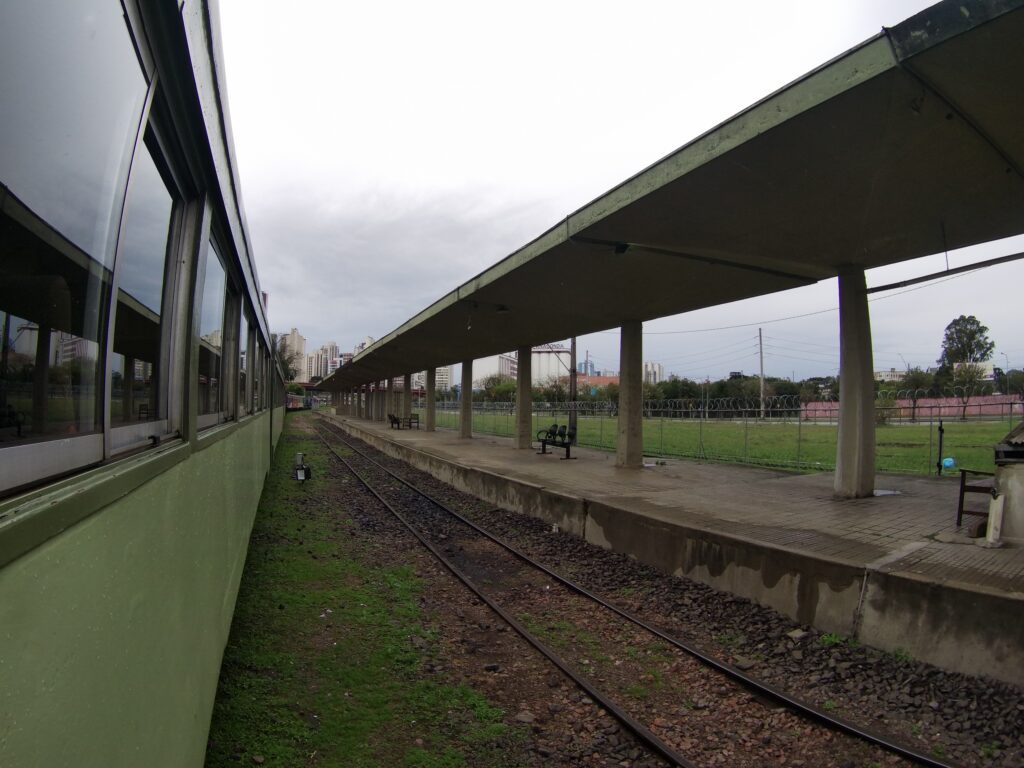

A short Uber ride later, I’m at the rodovaria, Curitiba’s central bus terminal. The train station is just a short walk away from where I first got off the bus to this city, and well-signposted. It’s pretty crowded when I get there, given that this is a public holiday. The wait does take a while since the train spends a lot of time going back and forth until it’s perfectly aligned with the platform markers, plus has to allow time for everyone to board. But hey ho – if patience is a virtue, its a blessing in Brazil. And this train is the kind of experience where one allocates the whole day for it, sits back and enjoys the journey.
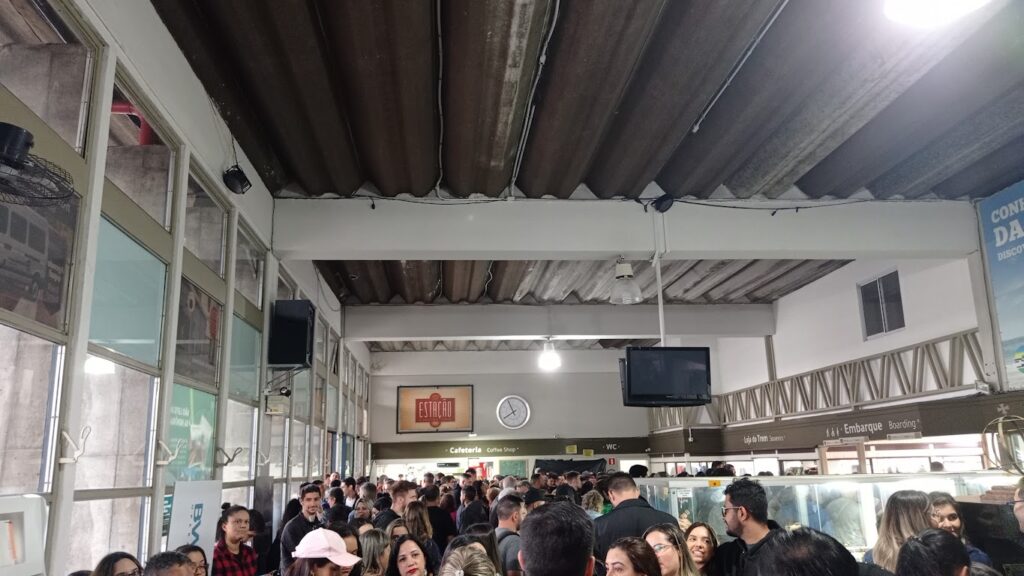

Into the hills
At the front of each carriage stands a jovial guide disseminating info on the train’s history and letting people know when they’re about to pass some jaw-dropping scenery – of which there is plenty on this route.


After leaving the city of Curitiba behind and entering the countryside, the scenery becomes progressively more dramatic. Fields of cows, fattening themselves on some of the greenest grass ever, slowly give way to mist-shrouded mountains. Emphasis on the word slowly: like many things about this journey, the scenery unveils itself at a leisurely pace. The hills at first pop up on the horizon, then dominate it. The slopes start out gentle, then become almost cliff-like. Surely the train won’t be going up and along them, you think? Oh, but it will.
In fact, with this railway’s route, it almost feels like it was built with the scenery in mind. Small wonder that the Brazilian government decided to preserve it for tourism while allowing passenger rail services to largely go extinct elsewhere in the country.
At first, the best scenery is on my side (the right). It’s at this point that many of the passengers from the left come over to snap some photos. On this train, it’s considered completely kosher to do so. Honestly, I could get behind this custom picking up steam in other parts of the world, as opposed to expecting your fellow passengers to stare at a cliff for hours. And besides, it’s in everyone’s practical interests too: soon, the best scenery will be on the other side.
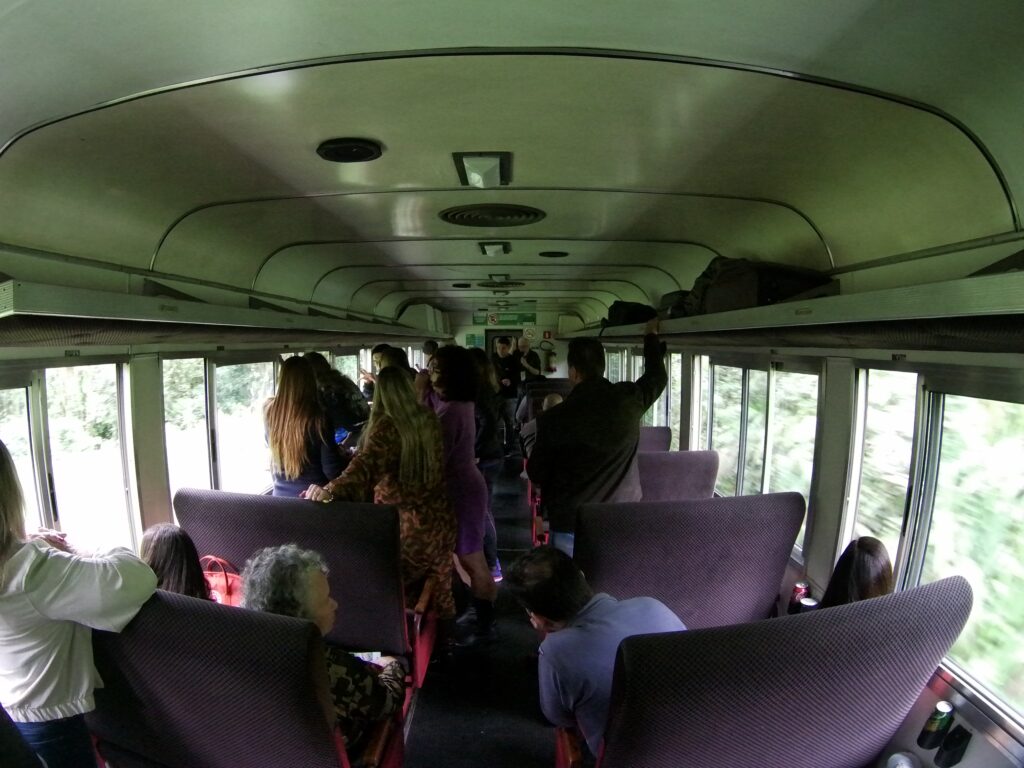

The windows are open, and the distinct smell of the rainforest wafts through the carriages. “Verdant” is the best way to describe the view: this is the Atlantic Rainforest at its most pristine, its most rugged. Immense trees cloak the hills, their branches draped with bromeliads and vines. No wonder they called this mountain range the Serra Verde, the Green Mountains in English. I don’t see too many animals on this part of the trip, but a toucan makes an appearance at the top of a tree and a giant blue butterfly follows the train for a good while. We pass through a tunnel, usually the least interesting part of any train journey. Not in Brazil – here, all the passengers cheer, letting the echo carry the sounds of their joie de vivre to the next carriages.
As it’s been raining the night before, I do worry a little that the journey will be up in the clouds. Once there, though, I realise I’ve timed it perfectly: mere wisps of cloud are all that remains of last night’s downpour, and serve as a reminder of how high up we are once we reach the railway’s highest point. I wonder how high up we are in the moment – a hundred metres? Two hundred? Either way, it’s a distance great enough to make the gushing waterfalls below look small.
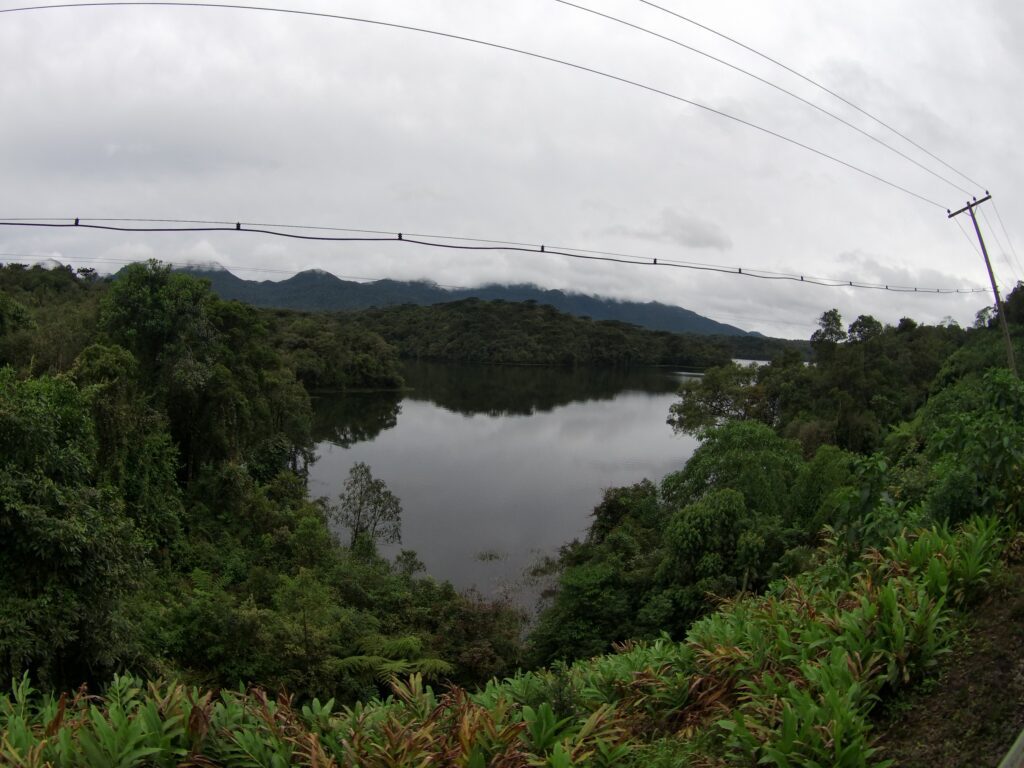

Arriving in Morretes
Insider tip: don’t worry if the train pulls into Morretes, the doors don’t open, and the train starts moving again. Being longer than the platform, the train has to let passengers off in different stages.
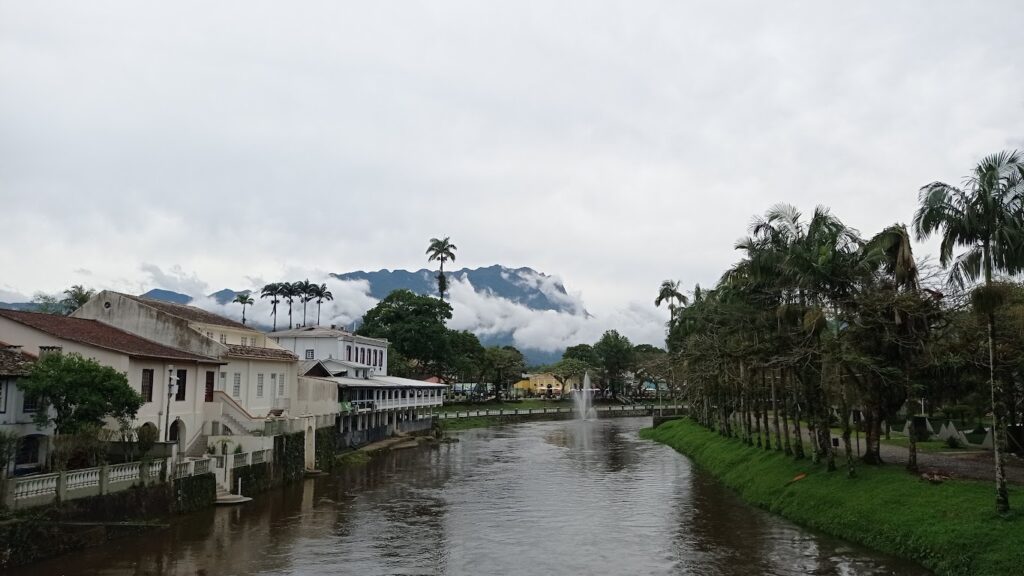

It’s a short walk from the station to the town centre of Morretes. And what a beautiful setting it is: brightly-painted Portuguese architecture lines the riverfront and cobblestone streets, interspersed every now and then by giant palm trees.
Morretes will make foodies happy, thanks to the local dish barreado, a type of flour-based stew that is often eaten with slices of banana. There’s also a self-serve ice cream shop where one pays by 100g – and that, is how I got a seven-flavour sundae by the river for a few pounds.
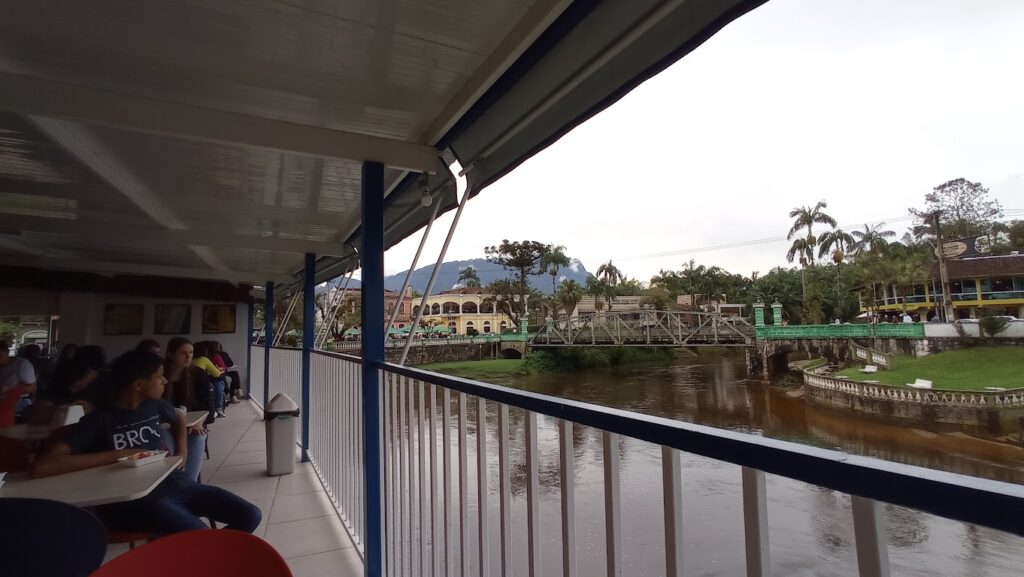

And since this wouldn’t be Shoestring Safari without a little wildlife, I did manage to spot some interesting birds in a patch of rainforest just to the north of town.
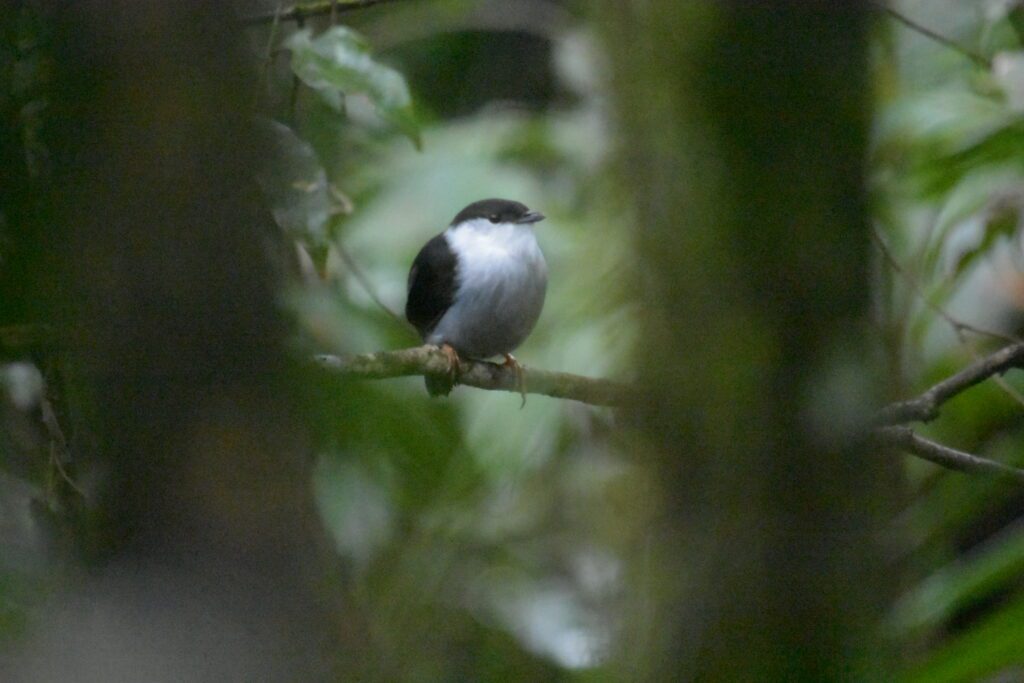

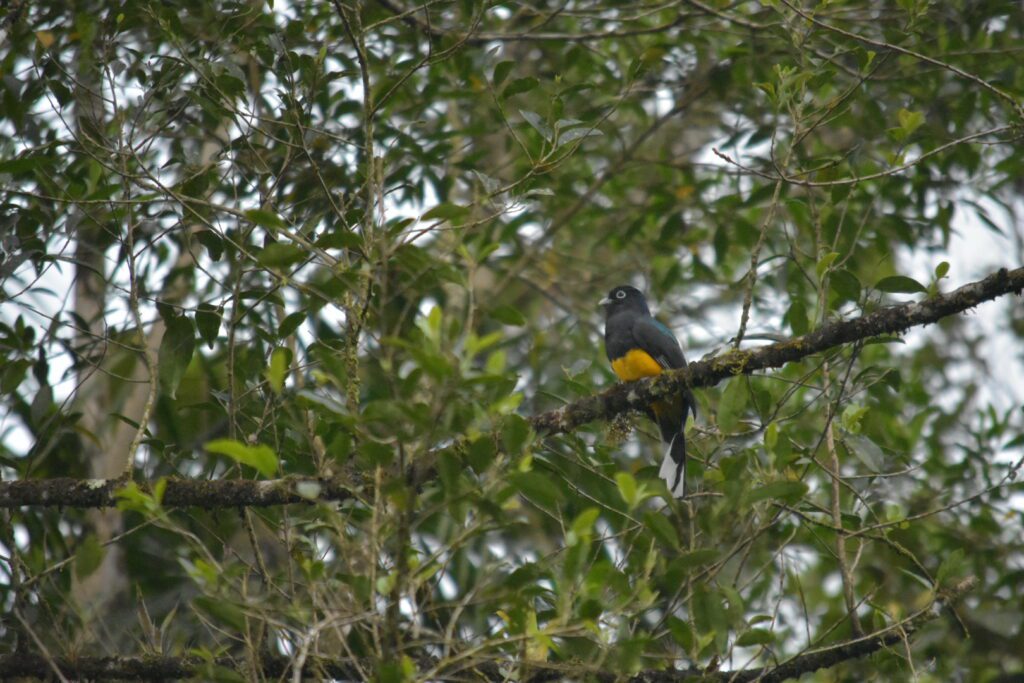

Getting back to Curitiba
As beautiful as the train journey is, buses take less than half the time and cost nearly a fifth of the price, so most people only take it one way. Buses depart from Morretes terminal, a ten-minute walk from the town centre. Like many buses in Brazil, they’re comfortable and leave on time. Don’t forget to bring your passport or another form of ID for this part of the trip, since you’ll need it to buy tickets and board the bus.
If you’d like to buy tickets in advance, Busbud is the best site for foreigners since it doesn’t require a CPF. Plan to book a bus departing two-three hours after the train’s arrival to give you enough time to enjoy Morretes, and also to allow for any potential delays.
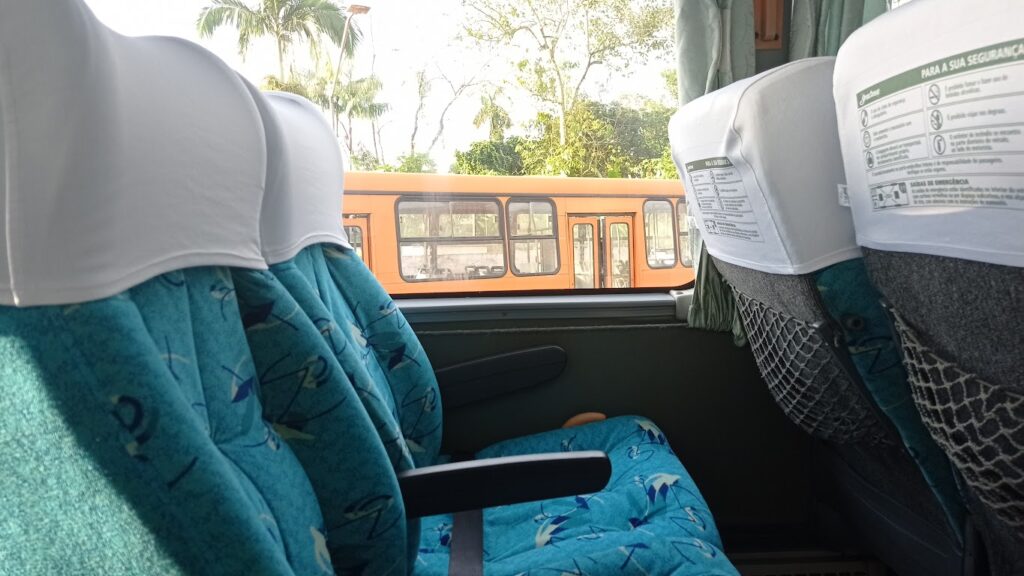

Can I stay in Morretes overnight?
Absolutely – check booking.com for the best accommodation options. The benefit of staying in Morretes overnight is that 90% of visitors are day-trippers, so in the evening things will be much more peaceful. Morretes is one of very few places where restaurants are much busier at lunchtime than at dinner – good news for anyone who prefers to sample barreada in peace.
How much does a day on the Serra Verde Express cost?
Current prices for train tickets themselves can be found on the official website, with the cheapest starting at R$149 (£25). There are also much more luxurious options, which will include seats in beautifully decorated carriages and a full-blown Brazilian breakfast of various pastries and coffee.
As for other expenses:
Buses from Morretes to Curitiba: R$30 (£6)
A plate of barreado: R$80 (£17)
Enjoyed this article?
If you’d like to thank me, please feel free to leave a comment down below! And, if I’ve inspired you to pack your bags, please consider making your bookings through one of the links on this page: by doing so, I’ll receive a small affiliate commission at no extra cost to you!



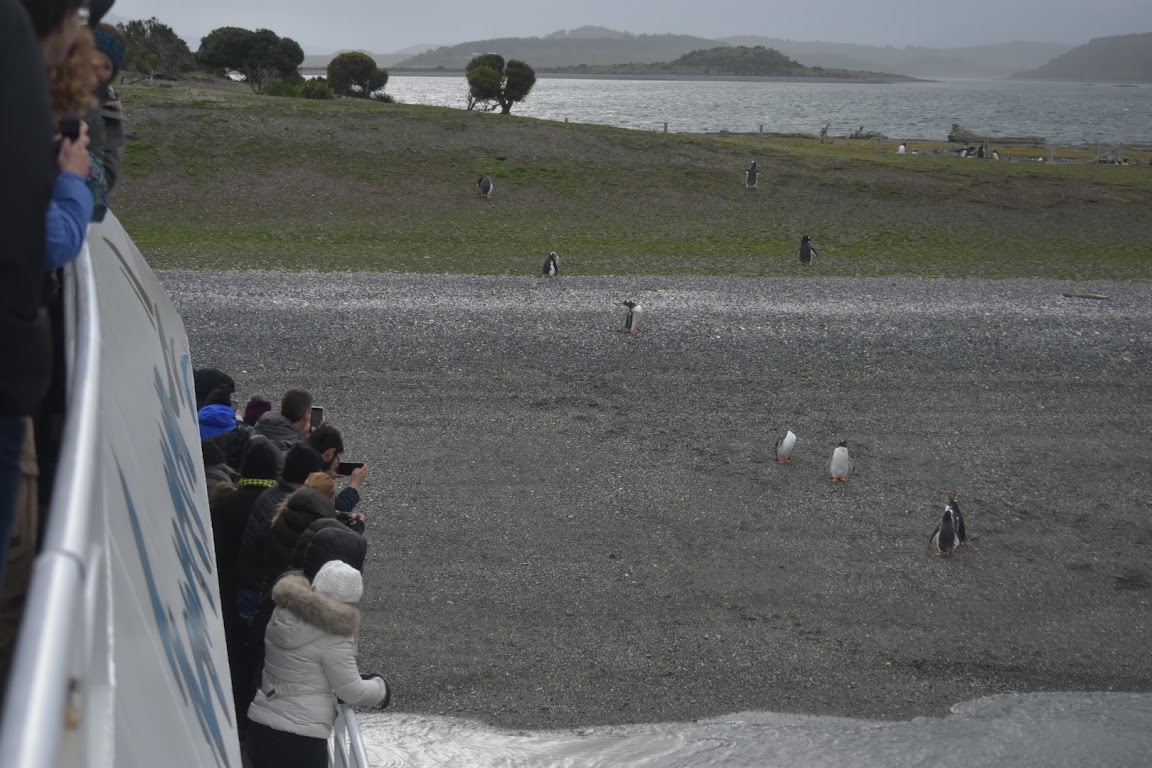
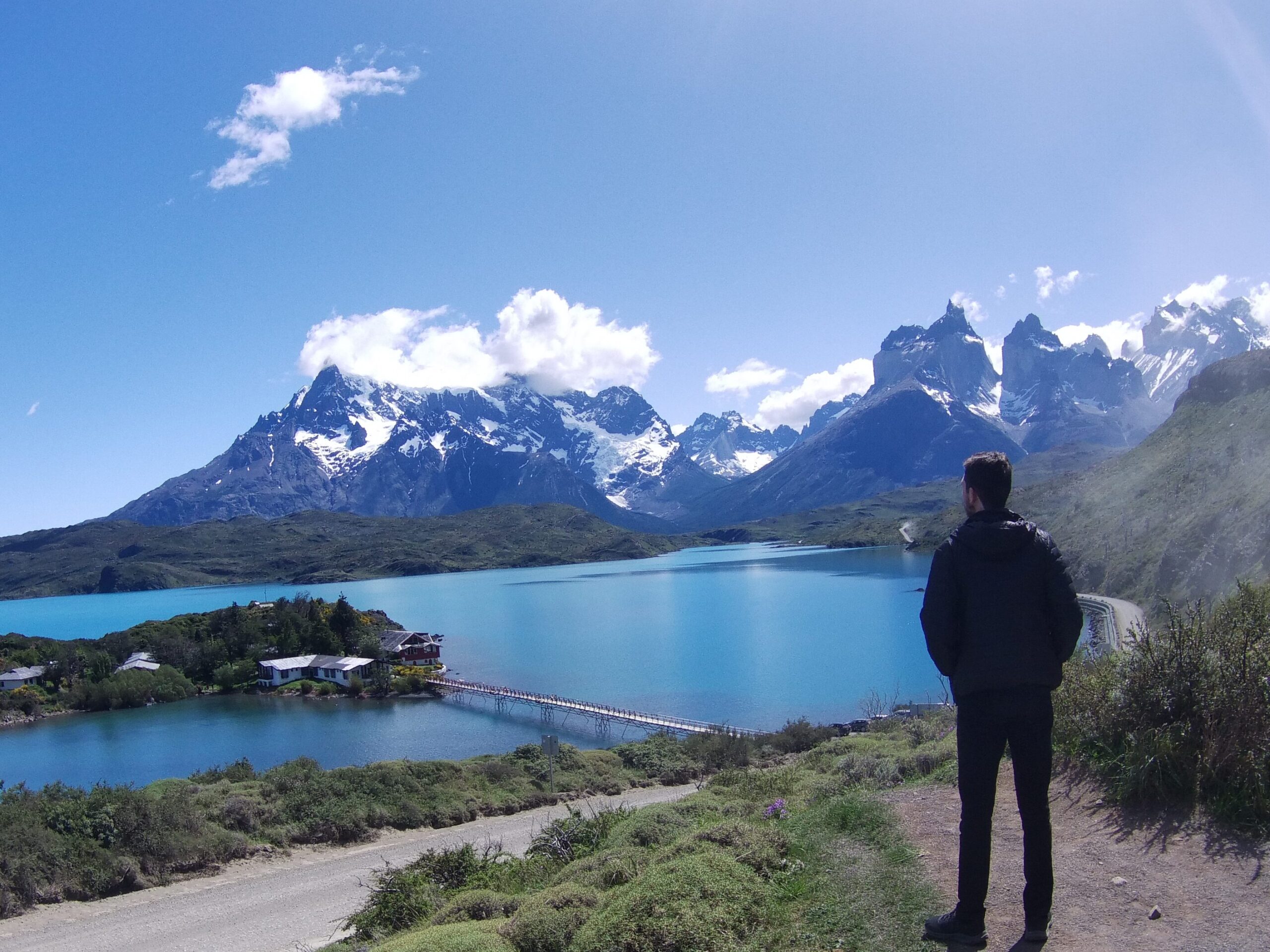
Ellie
Excellent post thank you!! I am heading to South America again in the next few months (2 x this year so far) and absolutely love train travel so this is definitely on my list. Thank you!!
Shaun
Thank you Ellie! Yeah, train travel is pretty limited out there but what they do have, they do well.